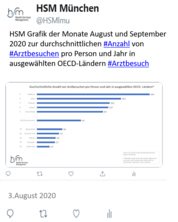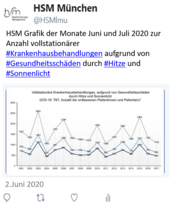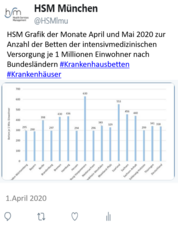Inzidenz, Rezidiv, Pflegebedürftigkeit und Mortalität von Schlaganfall–Eine Sekundärdatenanalyse von Krankenkassendaten.
| Authors/Editors: |
van den Bussche, H Berger, K Kemper, C Barzel, A Glaeske, G Koller, D |
|---|---|
| Publication Date: | 2010 |
| Type of Publication: | Articles in Refereed Journals (National) |
| ISBN/ISSN: | 0302-4350 |
| erschienen in: | Aktuelle Neurol. |
| Weitere Quellenangabe: | Volume 37, Pages 131-5 |
Abstract
We present the results of a secondary analysis of claims data for 2004 and 2005 of a nationwide statutory health insurance in Germany. This insurance covers 1 700 000 members, corresponding to 2.4 % of the statutory insured population in Germany. All members with a first-ever hospitalised stroke were followed for 12 months after hospitalisation. Inclusion took place on the basis of the hospital-based main diagnoses ICD I60–64. For the following 12 months hospitalisation due to relapse, statutory nursing care dependency and mortality were recorded. The gender-adjusted incidence was 126 / 100 000 in 2005 and 123 / 100 000 in 2006. The percentage of persons with relapse was 11.2 %, among them 2.4 % with 2 and more relapses. The percentage of patients becoming dependent on statutory nursing care after the event was 14.3 %. Regression analysis revealed associations between nursing care dependency and age, gender and type of stroke. The risk for nursing care dependency was 41 % higher in women compared to men. This risk grew by 13 % for every year of life from age 40 years on. Patients with haemorrhagic stroke had a 74 % higher risk of nursing care dependency than those with infarction. Mortality was 7.1 % during hospitalisation and further 10.3 % within the first 12 months of the observation period. Regression analysis showed an increase in mortality risk of 7 % for every year of life and an increase by 29 % for women in comparison to men. Haemorrhagic strokes had a 3.5-higher mortality risk than stroke due to infarction. The results of this study suggest a growing prevention and / or treatment success for stroke in recent years in Germany.





